|
This page is a reproduction
of part of the "Telling Tales" website by Ernie Weiss concerning
the school.
Ernie died in August 2006 and his site closed sometime later, but I have
since salvaged it from an internet archive
It is now complete with all missing photographs reinstated, and is presented
here in virtually identical format to the original.
E-mail links are now redirected to me, and external links have been removed.
I have also included the excellent contributions by Priscilla Wilder,
née Eaves, Gay Marks, Natalie Muzlish, née Besser, plus
photographs by Lizabeth Flint
- Norman
|
St. Mary's
Town & Country School
created by Ernie Weiss, one
of the Pauls' school's first pupils
Abstract
Despite its name - the "Town
& Country" portion was a post-war addition - St. Mary's School was an
independent (private) non-denominational co-educational school. To many of us
former pupils, however, it was much more than this - it was a remarkable and
unique learning experience.
Being too young during my time there to
be aware of the differing approaches to and theories of education, I guess that
St. Mary's must have been a "progressive" school, with its Froebel
leanings and its group learning practices. To what extent the school was
"progressive" is debatable - as, for instance, we still addressed our
teachers formally (viz: Mrs Eaves. Miss Gardener, Mrs Paul). The school seemed
heavily biased to the learning of languages and the arts from an early age,
sacrificing time devoted to the sciences and technology. (Some brief notes
about "Progressive Education" may be seen on The Beltane School web
page (my second school) via my home page under Links below.)
The school was owned and run by
Elizabeth Paul, assisted for most of this time by her husband Heinz Paul. They
were of German Jewish origin. They bought the school as a going concern in 1937
when it was still at 1, Belsize Avenue, Hampstead (where I believe the original
school started a few years earlier - in what form I know not). The Pauls
relocated and restarted the school in a pair of adjoining
"semi-detached" houses at 16 Wedderburn Road (between Fitzjohn's
Avenue and Belsize Park) close by in Hampstead, London N.W.3. during the summer
of 1937, initially as a day school. In September 1939 it became a boarding
school on evacuating London due to the outbreak of World War II.
Shortly after the war ended in 1945,
the school split. The main part returned to within half a mile of its pre-war
location - to 38-40 Eton Avenue (into another pair of leased semi-detached
houses) just off Swiss Cottage - where it remained until its demise in 1982.
The "country" boarding section moved to Stanford Park in
Leicestershire - but this only lasted for a few years.
Preamble
1. The Early Years & Boarding School During
WWII
a. A Memoir by Ernie
Weiss
b. Reminiscences by
Priscilla Wilder, née Eaves
2. The Middle Years -
Eton Avenue
Memories
a. 1947-48 by Gay Marks
b. 1953-61 by Natalie
Muzlish, née Besser
Photo Montage - from the
early 1960's
Preamble
The following notes are former pupil
personal memories. Essentially historical, these do not purport to be an
authoritative history of the school, however. Part 1 of today's web site
records something of the first eight years both of the school's existence and
of my formal education - mainly my war-time school experiences. This was
originally published as one web page within my "Telling-Tales" web
site. Then, in the autumn of 2003, another former pupil contributed with her
own (and more mature) memories of this era of the school's existence.
Before the above contribution, however,
on reading my web page via the Friends Reunited web site, a more recent (Eton
Avenue) pupil was stimulated to ask if she could add some of her own memories.
These were written and uploaded in 2002 and are shown in Part 2. Since then, a
few more former pupils have emerged, expressing some interest to make further
contributions - for example, a brief contribution of the late 1940s and the
Photo Montage (also in Part 2). These combinations progressively add interest.
In spite of another web site about life at the school in the 1960's (Norman
Barrington's - see Links below) there are still gaps: chiefly the immediate
post-war eight years and the school's last 15 years.
Some questions arise. Does a more
definitive school history exist? Is there anyone out there who has any more
memories of the school pre-World War II? Has anyone a pre-1960 copy of the
school prospectus? Are there any memories from Stanford Park? Where and for how
long did the "Country" part of St. Mary's exist between Stanford Park
(which was a school) and Hedgerley Wood (which was the Pauls' weekend home and
not a school)?
Most of us have very fond and positive
memories of the school in general and Mrs Paul and some of her staff in particular.
Hence, we keenly invite anyone who would like to record their own experiences
at the school to contribute. Contact may be made by email direct. Consolidation of such memories
and information would help to enrich and create a more comprehensive record
of this unique educational enterprise.
* * *
1. The Early Years
& Boarding School During WWII
Formal education started
for me at St. Mary's School in 1937, about a couple of months before my fifth
birthday. As Mrs Pauls purchase and rebirth of the school was that year, I must
have been among its first pupils. I remained there for my entire primary
education, or what Mrs Paul later termed the "Junior School." At the
end of the second world war in 1945 I transferred to The Beltane School.
On my first morning, I recall being
told on arrival to play in the sand pit, which was located in a large ground
floor bay window. Unfortunately, the school cat(s) had been there before me!
Nothing else of note comes to mind from my first couple of happy years at
school, except that I was much more enthusiastic about graphic art and finding
out how things and nature work, than about the three "R’s".
Another memory was my appendicectomy,
at The London Clinic, when I was almost six. A huge get well card arrived at my
bedside from all 15-18 of my school class mates. Five days after surgery I was
allowed up from my hospital bed for the first time. This was to see, from my
hospital room window, the 1938 Guy Fawkes fire works across London - the last
before the war put an end to these more festive rocket missiles and explosions.
We had a rather late summer holiday in
1939, in Llanmadoc on the Gower peninsula in South Wales. This was a farmhouse
holiday, with the five of us, plus my baby brother Peter's nanny - Evelyn,
alias "nurseydear" - and our closest friends, the Flemings
(originally Fleischmann): Oscar, Nina and their then teenage son Cecil. I
remember that there seemed to be endless expanses of sand and dunes, which were
about ten minutes walk through bracken and sheep cropped grass from the working
farm. It was there, on the third of September, that we heard that because of
Hitler's invasion of Poland, Britain declared war on Germany.
My father had to hurry back to London.
St. Mary's School was about to evacuate to the south west coast - so it was
arranged that Oscar would drive my sister Marian and me direct from Wales to
the school's new Devonshire location. I recall that we had to bed and breakfast
en route and the first time that I had a cooked English breakfast: egg and
bacon. Oscar was far more Jewish than we were, yet he enjoyed his bacon too!
Marian, aged five and I, not yet seven, were suddenly about to become boarders.
Along with about twenty other children of various ages, we were expected to be
relatively safe in rural England.
Marian and I had no idea then, of
course, how heart-wrenched and devastated mother must have felt, not knowing
when she would ever see us again. She returned to our London home to care for
her ageing and ailing parents, toddler Peter and with Robin already well on the
way.
Perhaps it should be explained that
only a small minority of children evacuated with their schools when the war
broke out, as these were independent schools and applied chiefly to those whose
parents could afford the fees. Mass evacuation started with the start of the
bombing blitz several months after the start of the war. Many children
evacuated London and the larger industrial city areas to escape the worst of
the blitz. (A second wave of evacuation took place in 1944, when the V1
"doodlebugs" attacked Kent and the Greater London area.)
Most of these children evacuated
without their parents to temporary "foster" parents in rural and the
less industrialized provincial areas. Many were sent to the north of England,
joining the local schools. Some suffered very difficult and miserable times,
with mutually alien cultures, dialects and customs. Northerners were often
deeply suspicious of Londoners, believing them to be delinquents and in the
myth of the "corrupt and evil city" and the likelihood of its
population being so contaminated!
St. Mary's School left London to escape
from the imminently expected blitzkrieg. So, it changed from being a day school
to a boarding school. 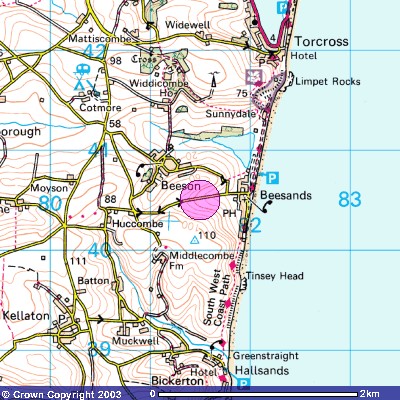 Beesands is a tiny village on the Start Bay
shore between Torcross and Start Point in the southern most part of Devonshire
known as the South Hams. This beautiful fertile region of English countryside
lies between the English Channel and perhaps the most rugged barren "last
wilderness" in the southern half of Britain: Dartmoor.
Beesands is a tiny village on the Start Bay
shore between Torcross and Start Point in the southern most part of Devonshire
known as the South Hams. This beautiful fertile region of English countryside
lies between the English Channel and perhaps the most rugged barren "last
wilderness" in the southern half of Britain: Dartmoor.
The school house was a fairly large
farmhouse, situated about a quarter of a mile along the shore just north of
Beesands, towards Torcross - shown on the map as the small square at the
north-east tip of the lee (lake). It accommodated a total of about two dozen
staff and pupils. The garden, down to the beach, was enclosed by a very high
thick hedge - a very effective wind break.
We had one of England's finest beaches
literally on our doorstep - a vast expanse extending to about six miles north
of Torcross, Slapton Sands and about three miles south to Hallsands. But these
are misnomers, as the beaches are almost entirely shingle. Tragically, the sea
had just about totally eroded away the village of Hallsands and I believe that
only one or two cottages were still inhabited when we left there in
1940.
There were no caravans on the
foreshore then and for the first few months we had the beaches entirely to
ourselves. Bathing was treacherous, with steeply shelved shorelines and severe
undertow, other than at low tide and even then, never without a teacher being
present was the strict rule, I recall.
We had a wonderful time. During that
first "Indian summer" we, the younger groups, often ran around naked
within the enclosed garden. Even during the first winter, we played mostly on
the beach and foreshore. I recall little of class sessions. I think that we
were split three ways: a few under six years of age, about six of us between
six and eight, about the same number between eight to 11 and a very few older
children. I remember only three staff during that first year: the heads, Mr and
Mrs Paul and Mrs Eaves (accompanied by her two children, Priscilla and her
younger brother John, who was two or three years my senior).
Elizabeth Paul was a large, vibrant
woman, who was enterprising, imposing and assertive. Beneath her
larger-than-life macho image, I felt that there was some warmth and empathy,
which she kept hidden most of the time. She was a linguist, being fluent in
English, French and German. Heinz Paul (we nicknamed him "Higgy" -
quite why escapes me) supported his wife, mainly behind the scenes and quite
possibly was a tour de force there. I do not recall him actually teaching,
possibly not being qualified. He appointed himself largely as the general
factotum. Mrs Eaves was a gem of a primary teacher, with infinite patience,
warmth and kindness.
Strangely enough I was not homesick,
although Marian (still only five) was at times. Marian and I remained at the
school over that first Christmas holiday, our parents deciding to visit us for
the festive weekend instead, with a few very basic presents and extra clothes.
The main reason for this, I believe, was that our London home was still filled
with Jewish refugees (from father's escape line) awaiting clearance and passage
to the States. Our parents had to come by train to Kingsbridge (this branch
line later became a casualty of the "Beeching cuts") and then by
taxi, as cars and petrol were allowed only to "essential" (and
privileged) users during the war.
The funny little silly things one
remembers: mother giving Marian a bottle of scent, which she dropped and
smashed accidentally the day after they left and how much more the loss of this
memento upset me than her! One of their parting gifts to me was a tobacco tin
filled with mother's cigarette smoke, which I opened after tea that evening to
surprise the other kids with "magic." Also, I recall startling mother
with my total rejection when she suddenly switched to speaking German to us
(which I explain later).
I remember the arrival of Paul and his
cousin Natasha, Jewish refugees from Vienna, who actually witnessed the Nazis
marching into the Austrian capital - a situation which I found astonishing, in
that they still managed to escape. Paul and I became firm friends for much of
our childhood. (Paul went on, via Aldenham School and the Architectural
Association, to earn quite a reputation as an architect. It is a small world -
many years later, Marian met him and his own young family at the Caversham
Centre in Kentish Town, London - the pioneering group practice/health centre,
when it was still in Caversham Road - where Marian was the practice nurse!)
We had some beautiful walks: the Devon
South Coast footpath to Start Point lighthouse, about seven miles round trip
from the school. To Torcross too, via the mini fresh water newt pond in a glade
(with many dragon-flies, newts and water-boat-men) and climbing Jacob's Ladder
up a small rock-face to the top of the little headland to descend to the
village. Behind Torcross lay the large fresh water lagoon of Slapton Ley
alongside and just behind the beach, created by the natural silting-up process.
(I found this path again over 40 years later and the vertical iron ladder, very
overgrown but still there, exactly in proportion as I had remembered this at
the age of seven.)
Naturally, we also explored the deeply
hedged Devon lanes inland, into the farming areas, with the rich red clay soil
and hedgerows dividing cattle from crops. Red squirrels were then still quite
common, before being ousted by the grey.
The farm adjoining the school was
mainly a pig farm. We were all upset with the slaughter sessions, as we could
hear the pigs squealing for their lives. In those days they cut their throats
and let them bleed to death, harvesting the blood. A nature walk for the entire
school was organized on these afternoons, to allay our distress.
Most mornings, we had a before
breakfast run: the older kids ran about 500 yards to the village store, called
The Crab Pot (I believe it still is) and back, the younger ones ran about half
way. Breakfast was certainly welcome after that. Despite food rationing, we
always seemed to have had plenty.
Half a day each week was dedicated to
maintaining the "sea wall" just below the high tide line as best we
could, due to the immense tides and erosion taking place. This meant piling up
stones and filling gaps with as many flat stones we could find, but setting
them in a vertical plane with edge to seaward, to combat the lateral power of
the waves along the beach. Frequently, we saw massive schools of porpoises or
dolphins playing and "show-jumping" in the inshore waves.
By the time of our first holiday at
home in 1940, I had deliberately forgotten all my German, despite the boast
that the school specialized in being multi-lingual! There were three reasons
for this. Firstly, anything German I was determined to scorn and reject, as
Germany had rejected us and then became the dreaded enemy. Secondly, to insist
on maintaining two languages may have exacerbated my speech impediment - a
severe stammer. Lastly, in contrast to most refugee kids, my living-in (at
home) grandparents knew sufficient English to not have to converse with them in
German. So Marian and I lost our German, though for quite a while we could
understand when we were not meant to!
One morning we discovered that a U-boat
(German submarine) was trapped in Start Bay by a sandbank at low tide. We were
rushed inland and out of sight, lest they opened fire on us. Apparently, they
surrendered and a coast guard boat went out to officially take them prisoner
and a trawler towed them in, probably to Plymouth.
On another occasion, we were all
ushered to the back of the house when one of us noticed what looked like a mine
floating in the waves. Very bravely, Mr Paul crawled Indian fashion down to the
waters edge to investigate, eventually to return somewhat sheepishly (and wet)
with a large medicine ball bladder (like a double sized football)!
Our world was beginning to feel a
little less safe than that desired. Then, in late June 1940, about a month
after the Nazi occupation of Belgium and Holland, France capitulated to the
Germans. This meant that the Hun were amassing just across the water, with the
invasion of England due next. Thus, the school had to evacuate again, from a
potential combat area to a safer more central inland location.
As a postscript here, our move was
indeed timely and fortuitous, as a stray torpedo (I know not whose) blew-up
much of the school house a short time after we vacated it.
Our new location was just as beautiful
as the one we had left but in quite different ways. The only similarities were
the very fertile land and its rich red soil. 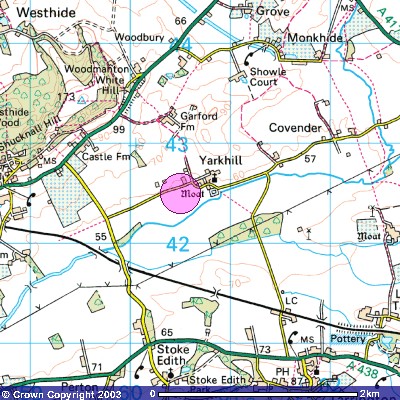 Yarkhill in Herefordshire is
in the heart of rural Britain, in the rain shadow of the Welsh Black Mountains
betwixt the city of Hereford and the Malvern Hills. We moved into Yarkhill Court,
a small manor house attached to a working mixed farm, about six miles east of
Hereford and lying between the villages of Tarrington and Stretton Grandison.
Our local Great Western Railway station was Stoke Edith (now no longer existing,
I believe) less than half a mile from Tarrington and about 1.5 miles from the
school.
Yarkhill in Herefordshire is
in the heart of rural Britain, in the rain shadow of the Welsh Black Mountains
betwixt the city of Hereford and the Malvern Hills. We moved into Yarkhill Court,
a small manor house attached to a working mixed farm, about six miles east of
Hereford and lying between the villages of Tarrington and Stretton Grandison.
Our local Great Western Railway station was Stoke Edith (now no longer existing,
I believe) less than half a mile from Tarrington and about 1.5 miles from the
school.
The house was early Victorian, built
along Georgian lines: square, rural, two stories, plus attic and, unlike the
rather ornate Victorian interior decor, unpretentious. It had a large mature
yew tree by the front gate. Adjacent, stood a small church within its
graveyard, to serve the immediate district. There was no vicarage, as the
parish included one or two other churches. To one side there was a huge walled
kitchen garden, mainly overrun with course grass and horse-radish. The only
other garden was to the front, chiefly lawn ( at one time a tennis court I
believe) with the access drive from the main farm yard on the other side and to
the rear. There was also a conservatory, which we used as one classroom.
The small river Frome flowed close by,
where we often swam in the red muddy waters, which we shared with Hereford
cattle, chub, perch, water-rats and otters. This was a tributary of the river
Wye. The farm then included some of the largest hop yards outside Kent, having
its own oast-houses. Traditionally, hops were used in the breweries - but the
war created another demand: as a khaki dye. The unique aroma of hops is still
one of my favourite. Opposite the school and across the access lane was a
little moat, surrounding an islet.
Shortly after the move to
Herefordshire, I was told that father had been sent to camp. I remember my
response that he would like that, as he was good at camping (it was much later
that I learned what internment really meant). Because of this, with the
resultant shortage of funds, my sister Marian had to return home and to a local
state primary school in Highgate Village, to save on costs. But for my speech
difficulties, I probably would have joined her. It was felt, however, that such
a move may have been too brutal for me, so mother scrimped and, helped with
some patience by the Pauls, I remained at St Mary's. Naturally, the funding
problem was remedied shortly after father's release from this arbitary
imprisonment a few months later, when he could start earning a living again.
It was a sad day when Marian left. Of
necessity, having had to leave home so very young and because we were only 15
months apart in age, we had become very close. Marian's propensity to care and
nurse came to the fore very early. This probably helped her as much as her
intent to comfort me, particularly living my speech and resultant temper
frustrations with me, which she recalls more vividly than I. One legacy Marian
took away with her was her sustained wont to vegetarianism, although never as
strict or peculiar as Mrs Paul's own diet.
On seeing Marian's "new"
school I was horrified. St Michael's Primary School had separate entrances for
boys and girls, where they had to wait in lines outside, regardless of the
weather, until the bell went. Class sizes were often over 40, learning was
largely by rote and discipline was imposed with the threat of corporal
punishment. The cane was much flaunted and frequently exercised! This
antiquated and destructive system was not untypical of British state education
in the middle of the twentieth century - a regime designed to humiliate and
subdue.
St. Mary's grew in numbers within the
first year of our Herefordshire tenancy. Miss Gardener joined us, an excellent
and most enterprising young teacher, who came with and lived in a genuine
lantern roofed original Gypsy caravan, set near the top corner of the kitchen
garden. I can still see the beautifully bright hand painted decor inside and
out, and the ornate cut and bevelled glass and interior furnishings, all being
examples of the most exquisite dedicated craftsmanship.
Later, as the school numbers grew still
more, we were allocated three conscientious objectors as teachers - but I doubt
how well qualified they were, as two of the three had not much of a clue.
Children are very quick and astute in sensing weaknesses and fallacies and we
were merciless with these two. They did not survive their first term. The other
"CO" (whose name I have forgotten) turned out to be an inspired
teacher: firm, no nonsense but fair and he became very popular.
Having a myriad of mainly happy
memories of these war years, I summarize but a few of these below. We saw
little of the war, only very rarely seeing anything of the military in our
rural environment. We experienced a little of the blitz only at home during
school holidays - but met crowds of military personnel when we travelled on the
then steam trains at the end and start of school terms.
Travel then was something of a lottery:
trains were always overcrowded, we very rarely found seats, standing, or
sitting on our battered suitcases, in the corridors much of the time. Trains
were inevitably late, or cancelled - sometimes very late and then much to the
consternation of those awaiting our arrival. The railways were the butt of both
radio comedy and music-hall jokes. Many people might claim that nothing much
has changed, despite the demise of steam and, more recently, the advent of
privatization.
I recall the awful news of the
expeditionary force's fiasco at Dunkirk and the small ship flotilla coming to
the rescue - probably the greatest escape in human history. I guess that every
primary schoolchild in 1940 was expected to draw or paint a picture of this
desperate escape scene.
Mr Paul joined the Home Guard. He
looked quite like Field Marshal Montgomery when he wore his uniform and beret
and was very proud of this resemblance. He also became the local Air Raid
Warden, but there were no air raids on our district! We all knew that Mrs Paul
was the prime mover in their partnership and she really ran the school, so we
felt that she was quite happy to see him with some important community service
to undertake.
Mr Paul was also a bit of a
"ham" psychologist and took copious notes about any of our
behavioural idiosyncrasies, my stutter and tempers included. The Paul's were
foster parents, or guardians, to a young adult, Michael, of below average
intelligence. He was a big strong fellow, yet very friendly. His one passion in
life was the cinema organ, which he pretended to play most of the time. He was
forbidden to use the pianos, as he was too heavy handed but he hummed and
hammered away anywhere he could, usually at the odd window sill, with great
zeal and energy - but no finesse.
As we grew older, our classes became
more formal than those in Beesands. There was emphasis on languages and the
arts - but very little on the hard sciences. Learning was usually in mixed age
and ability sessions and we were split into small groups working on our own
subjects, problems and projects. We had weekly round table spelling games and I
shall never forget how to spell "unnecessary", as this went round the
table of about 14 of us at least four times before the right answer was given.
Father had arranged for me to have
private Hebrew study lessons. He must have had a conscience about not bringing
us up with any Jewish knowledge (we were not practising Jews) as I cannot
otherwise explain his motives. The Hebrew teacher came by train, so to save him
time, we met on Sundays at Stoke Edith station waiting room and conducted our
lessons there. These only lasted for two terms; the teacher was not the most
inspiring and so my interest was never adequately aroused to foster sufficient
motivation.
Another even briefer flirtation I had
was with the piano. Living quite close to the school, in Bartestree, was a
superb pianist, musician and teacher: Michael Mullinar. He would have been a
top concert pianist but I believe that he had some phobia about playing in
public. He gave W.E.A (Workers Education Association) lectures, however and
performed at these. They were given at the school, as Mr Paul's most prized
possession was a Bechstein concert grand piano. There were usually seats to
spare and a few of us kids were allowed to sit-in. In this way, I learned to
love classical music.
Unfortunately, despite wishing to
become an instant Schnabel, I had insufficient patience to persevere with
scales, so my aspirations in this direction were very short lived, which I have
much regretted since. Marian, however, had a few piano lessons before she left
and Mr Mulliner felt that she showed some promise. This encouraged her to
continue with lessons with another teacher in London until she started nurse
training. One summer a group of us picked Loganberries for the Mullinars in
their garden.
The ever resourceful Miss Gardener had
the idea to re-cultivate the kitchen garden. All volunteers were given plots
within the box hedged areas and competitions were set-up with prizes for the
best cultivated garden and various best produce grown, monthly every summer and
autumn terms. There were soft fruit bushes still in abundance and all they
needed was weed clearance to bear more: red and black currents, various
gooseberries, strawberries and raspberries. Also, there were other fruit trees
bearing plums, pears, apples and peaches.
There was a communal effort to clear
the horse radish. This required double digging (two spits deep) to clear the
long roots - very long hard work indeed. We used this area for high volume
crops; firstly for potatoes to help regenerate the soil, then spinach, onions
and brussel sprouts. We also kept goats, rabbits, ferrets and a few chickens
and bantams. We took it in turns to tend them and muck-out. We had the run of
the adjacent farm, the barns and the apple orchards: Blenheims, Worcesters and
cider apples, with the odd crab-apple. Three of the farm's tractors, I recall,
were a bright orange Alliss Chalmer (a light weight fairly fast model which was
used mainly for towing carts along the lanes) a medium weight old Fordson and a
huge then modern bright red Case (which I believe came from Canada). I think
that the Case was a diesel and the other two were fueled by paraffin, with
petrol starting.
We had no gymnasium. On fair days, we
had exercise periods on the front lawn. Alternatively, we had school runs along
the lanes and through the fields. Our team games training was in a cow field.
We did play soccer against a few of the local schools - like Felstead Prep,
where we usually were thoroughly trounced.
The only other Ernest I ever met at
school was our goalkeeper for a time. He was highly prone to acquiring black
eyes, I recall. He had other problems though and kept running away from school,
so he did not last very long with us. We had our cycles. I was given mine by
Manfred, a school friend, who was with us for a short time before emigrating to
the States. These were mostly rather ancient models and we often scoured the
local lanes in groups or pairs. As traffic was very sparse, the roads were
relatively safe.
For recreation, we often cycled to
Hereford on a Saturday, to visit a museum, have tea, or go to the cinema to see
films like "Western Approaches" or "In Which We Serve".
Once, we went to a travelling circus in Stretton Grandison - the first I had
ever seen. On other organized occasions, we went to one of the three Malvern
towns nearby and sometimes climbed Worcestershire Beacon (just a mountain at
1000+ feet) or the adjacent hills.
The local (and the school's) doctor
needed his lawns cutting, as petrol was not to be used for this purpose. John
Eaves and I were the first to volunteer for this, with the motivation of extra
pocket money. Depending on the season, we cycled every week or fortnight to the
doctor's house in Tarrington. With John pushing and guiding and me pulling on
ropes, we managed both front and very large rear lawns in about three to four
hours, with an 18 inch roller mower. It was hard work and we soon became very
fit. After the first year, I took over the handles and another lad took my
place on the ropes. The doctor's wife very kindly provided soft drinks and
cakes or biscuits at "half time".
During the summer, there was also hop
picking. We were allowed to join the "professional" hop pickers, to
pick on weekends and late afternoons and evenings. We were paid per bushel, the
proceeds went to the school recreation fund. This was good fun. The hop-pickers
were a mix of real (Romany) gypsies and travellers from Bristol and east
London. They camped with their families in tents, or sackcloth igloo like
structures (as tinkers) and a few had old vans (somehow managing to acquire
petrol for these) in a field adjacent to the hop yards (as the fields where the
hops are grown were called). The latter looked a bit like vineyards with posts
and wire about 7-8 feet high.
Our teachers were not very keen on us
mixing too closely with the pickers' kids, as they were unlikely to have had a
bath for weeks! We found their chat, accents and street wisdom fascinating and,
of course, highly educational. I smoked my first cigarette then, an Embassy,
supplied by a tiny cheeky faced 11 year old girl urchin called Veronica, from
the hop-pickers camp. It would be unfair however to blame her for my subsequent
heavy smoking habit, which I was not to give up until my mid 50's.
There was one dreadful tragedy. Ann, on
the cross-bar of David's bike, crashed into an army lorry, which ran over her.
She died from internal injuries within minutes. She was but nine or ten years
old and such a bright, sunny and happy girl. What a tragic family: their half
brother, an airman, was reported missing about a month before this accident -
leaving Ann's other older brother Robin the only child. I am not now sure if
the father also went missing earlier. David survived, with a badly scarred leg
and with the most horrendous memory to have to live with. I remember visiting
him a couple of times at his home in Dolphin Square, Victoria in London, to try
to cheer him up during the holidays.
The infectiously enthusiastic Miss
Gardener also ran pottery classes, using the red clay we excavated from the
river banks. With her we built an outside firing kiln from fire bricks. Before
each firing, we had to collect a huge mound of wooden logs for fuel - enough to
last for 24-36 hours. We took it in shifts to tend to these day and night
continuous sessions. We set this up near the big old walnut tree - sometimes
munching these nuts when in season. I can still taste the fresh walnut flavour.
Sometimes, we toasted bread from the front of the kiln and baked potatoes and
chestnuts in the kiln on cool-down (which could take 24 hours) when firing had
finished.
Then there was the time that we
discovered the trap door to the cellar under the conservatory and a crate of
opened fortified wines, sherry's, ports and liqueurs. I cannot say that we all
acquired the taste for these - but our moderate and secret samplings from time
to time created interesting and intriguing diversions!
The school was quite enterprising also
with half-term holiday adventures. During the early years, we camped on
Tarrington Common (or more accurately, Durlow Common, I believe). These outings
usually comprised a long weekend, hauling ourselves and all the gear about a
mile up the hillside, where we camped "wild" but under supervision.
In the latter years we went into the
Black Mountains in Wales. We stayed at a tiny village called Capel-y-ffin,
between Hay-on-Wye and Llanthony. Firstly, we stayed in a Youth Hostel there,
the Blue (timber) Bungalow and then at the Monastery (which is now a hotel, I
believe). I remember the tiny sleeping cubicles, with slit church style windows
and the full size slate and mahogany billiard table, which pivoted to turn over
to form a huge dining table. We travelled there by rail, via Hereford and
Hay-on-Wye to Glasbury (the line has since disappeared). Then we walked and
climbed over the pass, with Hay Bluff (over 2200 feet) on our left and down the
Gospel Pass (which became a river in the winter). We enjoyed our adventures,
despite the mists and damp at times.
There were the usual epidemics of
children's diseases: measles and German measles, chicken pox, plus mumps, which
unfortunately I had just as I reached puberty and was extremely embarrassed,
uncomfortable and painful! I forget after which one but we had to sterilize the
entire school by fumigating with burning sulphur sticks for a whole day, which
probably put paid to all the fleas and bugs too!
On the one occasion when mother and
father visited, with her usual hawk-eye efficiency, mother discovered fleas in
the bedding. But then she could spot cobwebs at 100 paces, to the despair of
all our domestics at home! At school we also were subjected to head delousing
sessions, with special long tooth stubby fine combs and gallons of Dettol. I
think that there was an army of special district nurses ("nitty
Noras") appointed for this, in those days. Also, we had to take malt and
cod liver oil daily. I was very annoyed when aged 11, I had jaundice, knocking
me out for the best part of 10 days and completely ruining my Easter holidays
at home that year.
During the first half of 1944, London
was subjected to the V1's, the "Doodlebugs" or "Buzzbombs",
which were rocket propelled pilotless flying bombs. One fell close to my younger
brothers' school, Byron House, in Highgate Village, causing much damage and
frightening the kids, especially Peter. The school closed for repairs, so Peter
and Robin (aged 6 and 4) came to join me at Yarkhill for the three or four weeks
prior to the summer holiday break-up. Meanwhile, father arranged to rent a bungalow
in north Wales for the entire seven week vacation. Our parents, with Marian,
collected us from school. We all travelled by train, from Hereford via Shrewsbury
to Pwllheli and then by two taxis (one with all our luggage) to Abersoch. We
were out of harm's way for the entire summer holidays of 1944. 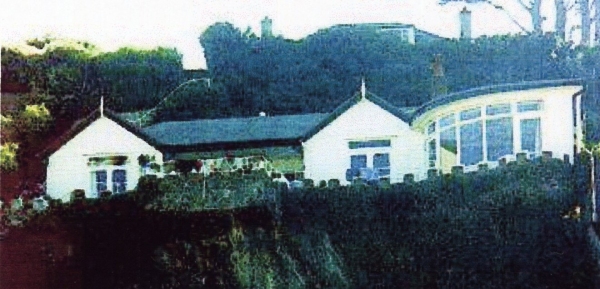
Our seaside bungalow was called
"Craig-y-ogoff" and was on the rocks, with a cave beneath it, which
was flooded at high tide. We had our own direct access down stone and concrete
steps to the sandy beach, which the bungalow overlooked. The curved extension
on the right is a more recent addition. We had a wonderful sunny August and
September there.
During my last year at St Mary's, a few
of us were billeted out, as the school house ran out of space. Six of us, all
boys, stayed at a little cottage at Shucknall, just over a mile west from the
school. This belonged to an elderly spinster who lived there and gave us a cup
of something in the morning and at bedtime. She was warm and kindly. There was
no bathroom or running water, only an outside hand pump and a "privy"
of traditional country two seat earth type at the top of her typical and
beautiful cottage garden. I shared a small bedroom with Durwood (an older boy,
who later went to and I believe eventually taught at Dartington Hall), while
the four others shared the larger front bedroom.
I remember the aroma of wax polish,
that unique gentle mellow tick of each swing of the pendulum from the
grandfather clock, the sweet smelling lavender, stock and honeysuckle and the
sharper lemon-like thyme from the garden. We cycled each way, morning and night
(sometimes running the gauntlet with local mischievous youths) - all of which
gave us a little taste of apparent privilege and independence.
Mr Paul bought a very old car during my
last term, an early to mid 1920's Singer 4 seater. The radiator cowl was
polished brass, the wheels were cast iron spoked affairs, the battery sat on
one of the running boards to the front. The brass headlamps were of the
acetylene gas type. Its top speed was about 25 mph when hot and having a crash
gearbox, its transmission ground and howled its laboured progress. The clutch
was very slow, hence gear changes were very much a hit and miss affair - Mr
Paul missed a lot but thoroughly enjoyed his new found mobility.
The war in Europe ended when I was 12,
about two months before the end of another school year. It was time to switch
to secondary education, which my parents felt would be better served by a
change of school, as there were very few qualified secondary teachers then at
St Mary's. Hence, I transferred to The Beltane School, another independent but
much larger and more progressive school, which is described elsewhere on my web
site. My time at St Mary's had been happy, despite the war creating upheaval
and making some of us boarders at a much younger age than normal.
We were all well looked after, well
treated and safe from the worst of the blitz. Although I would not have been
able to pass the Common Entrance (to Public School) examination, a few brighter
pupils managed to, so I guess that we received a reasonable elementary
education, with a sound foundation to develop into decent members of society.
Above all, most of us were happy and had been protected from war damage.
After I left, the school moved again
and became St. Mary's Town & Country School, partly as a day school back in
London, plus a boarding section, which I believe was at Stanford Park, near
Rugby in Leicestershire to at least 1949, which I believe that Miss Gardener
ran for a while. The main school remained at Eton Avenue until it was wound up
in 1982. As far as I know, there has not been any reunion event.
Copyright © Ernest Weiss 1995 -
2004 . . . www.telling-tales.fsnet.co.uk
* * *
b. Plus Reminiscences by Priscilla Wilder, née
Eaves
I never could understand the school's
name - but I understand that Heinz and Elizabeth Paul bought it with that name
sometime in the mid to late 1930's. I joined the school in 1937 and was nine
years old. It was then located in Belsize Park but I don't remember the exact
address. It consisted of two adjoining houses. The students were primarily the
children of artists (musicians, writers, film producers, actors, etc).
It was the time of the Spanish Civil
War and I remember a benefit being given to aid the anti Franco forces. Paul
Robeson's son and Stella Adler's daughter Ellen were enrolled in the school.
Stella Adler was with the Group Theater which was performing in England. Paul
Robeson was singing in England. Ellen Solevieff was one of the older children
and came from America. Her family were in the arts and her sister Miriam was a
violinist. Ellen died tragically at the beginning of World War II. In true
British fashion we were not told what had happened but several members of the
family died and I believe only Miriam survived.
The school was rather more academically
oriented than it was during the war. The Paul's were still associated with what
was their school in Berlin and the aim was to have children spend time (one
year) in each of the schools on a rotational basis. We studied English, German
and French from the earliest ages. Science education and sports were minimal,
although I do remember playing tennis once a week and going to the baths on
Finchley Road once a week for swimming.
This all came to an abrupt halt on
September 3rd, 1939 when war was declared on Germany. The next day we found
ourselves at Paddington Station with large labels hanging around our necks with
our name, the name of the school and our destination. In our case it was
Dartmouth. From there we must have been taken by bus to Beesands where the
school had found lodging in a relatively small house at the end of the beach.
My mother had come with us as one of the teachers and she was joined by my Aunt
Margie, my father's sister, who assisted in the housekeeping/cooking
department. I slept in one room in a fisherman's cottage with my mother and
Aunt. We all shared the same feather bed which I recall was wonderfully warm!
School supplies were scarce to
non-existent. We used slate from a local quarry for writing purposes and we
shared a few textbooks. There was no local library and books were borrowed.
After the first few months of the war, we couldn't swim as the beach was mined
and the fishermen had a narrow space in which to keep their boats to prevent
mine accidents. The beach was strafed by the Luftwaffe but no mines were
detonated and I recall no injuries to children or fishermen.
The greatest problems to everyone were
the oil spills from sunken vessels in the English Channel. The oil saturated
the seabirds and poisoned the fish. The fishermen would haul in their nets and
pull out large balls of tarry substance and their polluted fish and crabs.
Ultimately they caught few crabs even though Beesands was famous for large
hauls of these creatures.
When France surrendered we were
evacuated to Yarkhill in Herefordshire. The train stopped in Bristol which had
been practically flattened the night before by incendiary bombs. Fires were
burning everywhere and I remember being frightened because my grandmother lived
there. My father was on the platform and told us the family was safe. My
grandparents had bought a house just outside Bristol and spent the nights
there. I assume they took the train or bus each evening and returned to the
city in the morning. My father was in the RAF and had stopped to say hello
before leaving on assignment.
We arrived at Yarkhill and were
astonished by it's size in comparison to the digs in Devonshire. Three floors
but only one bathroom. There was, however, an outside loo. The grounds
consisted of a grass tennis court in front of the house, a large vegetable
garden to one side and an access road with farm buildings on the other.
Yarkhill Court was the home of a
gentleman farmer who was then in the armed forces. The farm grew fruit
including a variety of currents and hops. There were cows in the fields but I
am not sure whether they belonged to our farm.
Gypsies came during the fruit and hop
harvesting time to pick. We also helped with the picking and I remember loving
the smell of the hops, the warmth of the sun and the luscious berries. It was
heartwarming to see the small gypsy babies tied to their mother's back with
huge scarfs or to see them in the edge of the hop crib. It was the first time I
had seen breast feeding!
Workers were paid by the bushel
basket. The gypsies spoke some English but they conversed among themselves in
Romany. Most were illiterate and my mother would read letters from their
husbands or boyfriends who had learned to read and write in the army. I
remember admiring the bright clothes and long black hair. I thought the women
were exotic. Their life seemed so romantic. I was completely unaware of their
hard life without running water and inadequate clothing and food.
Several people involved with the school
were very special to me. Rosamund Gardener joined the staff in 1941 or 2. She
had been a teacher in Monserrat for several years and was an artist. She taught
English and Art but taught anything else that she felt was needed. She was a
fiercely independent woman, a real feminist and completely committed to
teaching. I have kept up with her over the years. She lives in Taos, New
Mexico. After the war, Roz went to the University of London and earned her Ph.D
in Psychology. While at the London school she met Dorothy Barnett who was an
archaeologist and writer. They became life long partners and Roz moved to San
Francisco where Dorothy had a house. They both lived very interesting and
productive lives. Their friends were numerous and once they retired to Taos,
Roz began painting again.
Elizabeth Paul, our Headmistress, had a
tremendous influence on me. My love of language and a certain joie de vivre,
filled me with a longing to be part of that European heritage which was so
steeped in culture, personal refinement and gentility. Elizabeth gave me my
first pair of high-heeled shoes which I wore when I took my school Certificate
Exam at the Malvern School for girls. They were taken away from me as soon as I
arrived and I never saw them again. As a teacher and friend, Elizabeth always
encouraged me and whenever I went back to England I went to see her in her
Chiltern Hills retirement house. She was a very bright and passionate woman who
played favorites but I was lucky to be one of them.
Then there was Madame Selva or was it
Silva? A diminutive but forceful woman and Elizabeth Paul's mother. She wore a
chatelaine and many keys dangled from her waist. She was the mistress of the
food and held the keys to the storeroom. She never learned more than a few
words of English which forced us to speak German to her. She communicated with
Harry (the cook and former stablehand and groom) via gesture and expressive one
word utterances of either German or English.
Harry was a marvelous character, a
rotund and jolly man who had never been married and who took the whole of the
school on as his family. I think it was the happiest time of his life. Joan
Askins told me that when the school left for Bedfordshire he tried to follow it
and walked all the way. He was either no longer needed or the school had
already moved back to London but it was a heartbreaking story.
The children I remember were Michael
Derwood, Joan Askins, the Bowleys both Robin and Ann, Ernie Weiss, Arnie
Altschul?, Andrea Strasser, the petite and beautiful granddaughter of Haile
Sellasie who was a day student. John Mates tended the garden and the Wares
(husband and wife) both taught and helped in the house for a period of time.
I took piano lessons from Michael
Mullinar and ballet lessons with his wife Mary. They lived in a neighboring
village and it was a great occasion when we saw the Mullinar's first baby,
Keith. Michael gave music appreciation lectures at Yarkhill fairly frequently
and I remember every record that he played and discussed (Das Lied von der
Erde, Harry Janos, A Child of our Time, Façade, Peter Grimes and of
course Vaughn Williams' works). The latter was Michael's great friend and
patron.
I remember plays in French and German
played in the barn behind the house. There were half-hour breaks in the morning
and afternoon when we had a slice of bread with margerine and another with jam.
We had one sweet a day which was served after supper, I believe. It was always
porridge and a slice of margerine covered bread for breakfast. The main meal
was at noon. Although most foods were limited we had plenty of vegetables,
potatoes, and fruit.
I was not a happy child, maybe none of
us were. Grown-ups did not confide in children and we were not even kept
abreast of what was going on in the war. I was always the oldest child and felt
extremely responsible. I never received any special attention and felt isolated
and lonely. There was no one to talk to and I knew that I was ignorant of many
things that other teenage girls were aware of. I worked hard and enjoyed
school. I am now grateful for our many experiences because I think we grew up
to be caring, adventurous, multilingual citizens of the world. It was indeed a
unique intellectual trip into adulthood.
Copyright © Priscilla Wilder 2003
* * *
a. 1947-48
by Gay Marks
Being so young when I first went
to Town and Country in 1947/8 means that there is no continuity to my memories
- rather a bundle of impressions - but very vivid ones at that. Mrs Paul, to
start with, was the totally unapproachable figure on the Floor Above who wore
amber beads and whose delicious-looking meals went up on a tray while we ate
disgustingly plain dinners down in the basement. In no way can I equate her
with the inspired teacher and educationalist in other accounts. Wizened Mr Paul
told us Greek myths in a thick German accent and wore a black beret.
Nobody else mentions the teachers
we had in that immediate post-war period: Mr Williams (Willy) for music:
pink-faced and jolly who conducted our "orchestra" with tremendous
gusto, or Mr Gubbins (Gubby) for maths who had greasy hair and smelt. Perhaps
they were roped in when nobody else was available and swiftly moved on.
However, I do remember Miss Bennett who was slightly fierce but nice with it.
Writing was my best subject. "Come on, now Gay, don't look like that,
we're going to read your essay out." I can still remember what it was
about: A lazy day on Hampstead heath. There was also Mrs Noyes (very nice) and
Mr Pousteau - unintentionally funny, poor bloke, and there was Miss Gardner
whom I can still see now, sporty and laughing with a lot of even teeth. She
once had to separate me and my sister who were fighting in the playground.
I fell in love with the bigger
boys one after the other from Peter H. and Peter J: to Julian C. and was
frightened like most of the girls were by fierce Eddie who had his camp round
the corner between number 38 and 40 and who terrorized us together with his
henchmen. Caroline Dimont, the actress Caroline Mortimer was in my form, and
little David Nelson who sang "Where'ere You Walk" in his angelic
voice. Carole Shelley the child actress was also there and a host of others who
probably wouldn't remember me as I was then a shy child.
Often our classes seemed to be
held with different age groups and we would have German lessons sitting under a
tree on Primrose Hill on lovely summer mornings, walking there in a crocodile
down Merton Rise, shivering in horror as we passed the grim porch of the
"Witch's House." I learnt absolutely nothing academically at St
Mary's and the fact that I scraped through the ten-plus exam must have been
partly due to the enquiring mind and intelligent outlook the school helped to
foster in us.
When I was thirteen or fourteen I
was invited back to a party there by a former pupil who had kept up with the
place, and was impressed - by what seemed to me then - the sophistication of
the kids there. So different from those of the single-sex grammar school I now
attended. Looking back I realize, not unsurprisingly so given its origins and
objectives, that Town and Country turned out a more European type of English
person. Maybe I unconsciously hankered after that, as some years later as a
young adult, I came to Italy and have lived here since. However, I still dream
of Eton Avenue.
Copyright © Gay Marks 2004
* * *
b. 1953-61
by Natalie Muzlish, née Besser
I started at St. Mary's Town &
Country School in September, 1953, when I was eight years old. The photograph
was taken during my first year in the Spring of 1954. It is of Class Lower IV,
with me at the front.
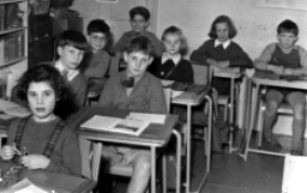 After
almost half a century, I can recall only a few names. Immediately behind me
but to my left is Geoffrey Burns. The boy in the row behind Geoffrey is Keith,
behind whom is Peter (who now runs G-Plan Furniture). Beside Peter is Stella
Riser and then another Keith.
After
almost half a century, I can recall only a few names. Immediately behind me
but to my left is Geoffrey Burns. The boy in the row behind Geoffrey is Keith,
behind whom is Peter (who now runs G-Plan Furniture). Beside Peter is Stella
Riser and then another Keith.
The only other school pupil names that
I remember are: Anne Cruikshank, Gillian Glass, Glenys Jones and Angela
Pleasance (who became an actress). Also, Larry Adler's and Andre Previn's
children were at St. Mary's - but I do not recall their names.
I remember that the school
at 38-40 Eton Avenue seemed to be very large, with two houses built together
and with very high ceilinged rooms. I was a very shy person, not knowing the
art of joining in and being rather nervous of being intertwined in a seemingly
large co-ed school. In looking back, although it seemed large at the time, in
fact the school was very small.
The playground had a tarmac surface, on
which we had to queue up before being allowed into the back entrance once the
school bell went. The playground was split into two parts; one for the younger
children and the main entrance for the older ones. On entering the building
from the back, you came across pegs for the children to hang their coats and
satchels on. There was another room for the older children to hang their own
things on. The kitchen and dining room were also to the rear.
The house consisted of three floors.
The ground floor had two large rooms, which were used for assembly, These could
be divided to make individual rooms. The back part was used as a stage, when
plays were being preformed. This happened on a regular basis. It has some wood
placed on it to make the floor higher that that in the other room. The plays
performed included Tiki et Taki and The Wind in the Willows. The latter seemed
to be a great favourite, as I remember that it was performed quite often. In
fact I played Mollie in one version. I do not recall what year that was - but I
know that I had a mask and a tail and remember looking very stupid. The other
room was also used as a classroom in later years.
Mrs. Paul's room was on the next floor,
where we were sent if we were naughty. I remember having to wait outside until
she was free to have our punishment dealt out. The rest of the house consisted
of more classrooms, with the art room on the top floor. All the teachers were
specialists in their subjects. The art teacher was an artist, the French
teachers were fluent in French, and so on.
When a new teacher, Mr Brown, arrived,
we decided to have a bit of fun with him. He had not known the area, so, on one
of the local outings he arranged, we took him out and around, getting him
completely lost. My memories of him are very vague - but it has always stood
out how difficult a time he had and, looking back, I felt rather sorry for
him.
Our essay teacher, Miss Jean Bennett taught at the school for just one day a week. She lived in Reigate, in Surrey,
and brought her small terrier dog with her. She always expected us to hand in a
weekly essay. For this I won a prize of a bird book, which I still have after
41 years. At the time I could not see the benefit of her lessons and thought it
just a chore to have to write these essays. Yet, today I can honestly say that
it had stood me well in life for writing letters and so on.
One subject Ms. Bennett asked us to
write about, I recall, was Churchill. I had not heard of this man at the time
and interpreted this to be Church Hill and wrote an essay about that. In fact
she read out my essay at Assembly, where she would read out the most unusual
essays of the week. I do not know, looking back, whether I was proud, or just
purely embarrassed, as obviously I had got the wrong concept of what she was
trying to achieve. Ms. Bennett gave us the choice of any one of three essay
subjects each week. I am sure that she did not think that anyone could have
misinterpreted her ideas so badly - but perhaps it is good to have different
inputs about every topic.
Holidays were the highlight of the
school year. They seemed to be for nearly three months in the summer. I am sure
overall that they were no longer than elsewhere - but they were always taken as
a block. Opposite St. Mary's was another school where the pupils wore green
uniforms. They were known as the "Green Flies."
Mrs Paul always believed in psychology
and was quick to involve parents. I thought that I was different - but knowing
better now, I feel that too much emphasis was placed on this. A child will
develop and grow with love and should not be made to feel different. I feel
that in today's society Mrs. Paul got it wrong - but who can say what was right
or wrong 40 odd years ago?
Mrs. Paul was a linguist and spoke
fluent French and German. She was a forbidding type of person, who seemed to
tower over everyone. She always believed in getting the parents involved with
pupils' punishments and disciplining at every opportunity - to the detriment of
the child in some circumstances. After over 40 years since leaving the school
in 1961, I now can look back and see the bigger picture. Mr Paul wore a cap and
could be seen around the school pottering about here and there. I never had
anything to do with him.
We were taken to Haverstock Hill when
we were till fairly young and I remember digging up some old stone statue like
parts. I never heard what actually happened to them. All that I can remember is
coming back full of dirt and that we all must have enjoyed the event.
The choir sang on the radio when I was
quite young. We were taken to central London and sang our hearts out. This was
quite something, as not many schools had the privilege.
Our history and singing teacher was
Mr. Myerscough (pronounced "Miasco"). He later changed his name to Mr
Neville, explaining that too many people found difficulties in pronouncing his
original name properly. He smoked non-stop, lighting one cigarette after
another. He was certainly quite a character and even composed a school anthem:
Esta Maria Scholar (excuse the spelling, I never took up Latin, preferring to
study German instead). The words I recall were something like: "Esta Nobis
in canticha pro examina." It certainly would be interesting to hear if
anyone else remembers this.
Mr. Myerscough was a larger than life
personality, with enormous enthusiasm, which he down loaded into our young
minds. His love of his subject was very apparent. I can hardly recall anyone
else that I have ever met who made such an impact on me and which has lasted
for so many years. He was very unique and most dedicated to the cause.
A husband and wife team, Mr. and Mrs.
Sylvane, taught English and Maths. They were both rather small, thin and stern.
Mrs Sylvane had a pointed nose and wore glasses. They both got good results
though.
There was a privet bush outside the
school and one day I found a stick insect on it. The school kept such
specimens, from which we learned some basic biology. We had to supply them with
privet leaves.
Cookery classes were held in the dining
room. We had to bring in the ingredients to make the food. This was more fun
than anything else, as the food had to be transferred to the kitchen to cook in
the ovens there. Each table had about six children trying to achieve some
resemblance of what we were supposed to be making. Naturally, we had to tidy up
the mess. Once cooked, we were presented with the results to take home to our
parents. We had to jot down the recipe and how we achieved it in our exercise
books. I do not remember any very successful outcomes.
The cooks prepared lunches on the
premises. We had to queue up for lunch in classes, the meals being dished out
by the cooks. I remember that it was always called : "meat, potatoes and
greens." There was also some kind of pudding. These meals were served with
a multiple of sittings, so we had to eat up fairly fast and then go out and
play. The tables were in lines across the room and a person was elected to tidy
up afterwards.
Swimming was at the local baths in
Finchley Road. As I did not swim, I watched from upstairs, which I found rather
boring. All the swimmers had to change as fast as possible, as the whole
session, including transport, etc. was for such a short time. All P.E. and
games was undertaken at Haverstock Hill. In the summer we played tennis and in
winter it was hockey and netball.
When studying for the "O"
levels we went to see Merchant of Venice and other Shakespeare plays. The
school believed in the cultural things in life, which was definitely evident
with the many different things the school undertook. For the French
"O" level we studied "Les Enfant Terrible," which I found
very hard and have never enjoyed it until today.
I have since come to appreciate some of
Shakespeare's works, once I went to see the plays when I was older and could
understand better the finer points. It was not like studying every passage and
trying to grasp what the writer was meaning and by having to comment on each
sentence.
After-school activities consisted of
ballet classes, which I was never fortunate enough to take part in. Naturally,
at the end of each school day, things were rather hectic. Parents arrived to
pick-up children, rushing for the buses to go home to start and complete the
homework, which was to be handed in the next day.
On Guy Fawkes night (5th. November) the
school had a fireworks party, to which we were invited to return and have some
fun. This went on for about five years until it was no longer feasible
(probably for safety and insurance reasons).
The most advantageous aspect of St.
Mary's over most other schools was that the class sizes were small. It seemed
to me that there were no more than 20 pupils to a class. We received much more
one-to-one learning, especially where individual problems arose. There were
still dententions - but these would only last for about half an hour, so you
could travel home by catching the next bus.
The school uniform was tartan skirt and
a turquoise blazer. The boys wore grey. The school also had some boarders - but
I do not know where they stayed, as this did not concern me. All that I can
remember is that the boarders were given some refreshment after the day's
school session had finished.
If anyone else remembers anything more,
or can put some light on the years after 1961, we would love you to bring the
school memories up to date. I know from friends who lived in the Swiss Cottage
area that they had information on it, right up to 1982.
Copyright © Natalie Muzlish 2002
. . . . .
* * *
Photo Montage
The following dozen photographic images
are from the early 1960's. These are shown here thanks to former pupil Lizabeth
Flint, via Natalie Muzlish - all due to our common membership in Friends Reunited.
Unfortunately, only a few of the names are remembered. Should anyone be able
to identify any of those not named, please email direct. One such respondent was
George (Juerg) Haller (Photo 9) - from Switzerland - with a few more names,
plus the addition of the last four photos from his 6x6cm Ilford Sporti camera
- (thanks George!).
Names are listed from left to
right
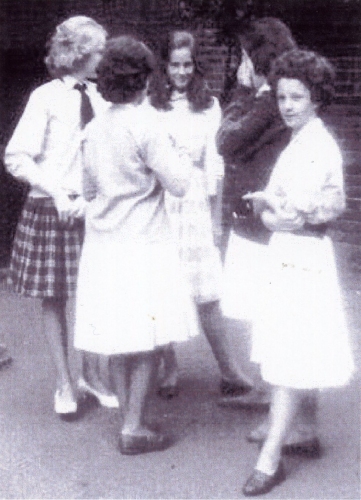
Photo 1. Lillian Trigg, Pam Thompson, ?,
Juliet Glaister, ?
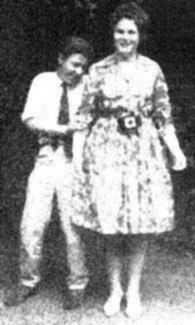
Photo 2. ?, Angela
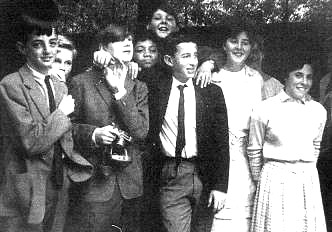
Photo 3. Michael Spencer, ?, Timothy Grimes,
?, ?, ?, Jackie, ?, Susan Elman

Photo 4. Mr & Mrs Sylvain
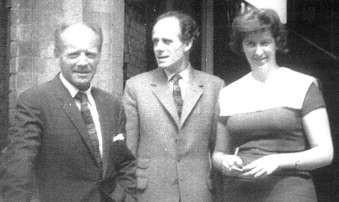
Photo 5. Mr Nash (Pianist), Mr Myerscough
[Mr. Neville] (History), Miss Bunting
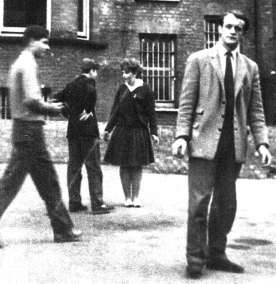
Photo 6. ?, ?, Angela, Mr David Cheetham
(English)
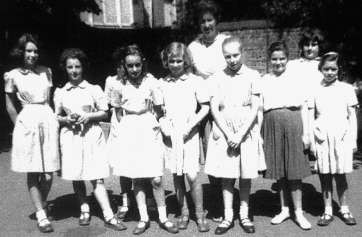
Photo 7. ?, Juliet, ?, ?, Miss Bunting, ?,
Sharon Gold, ?, ?
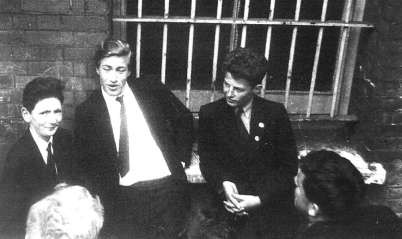
Photo 8. Donald Atkins is to the right
of Michael Schmidt
?, ?
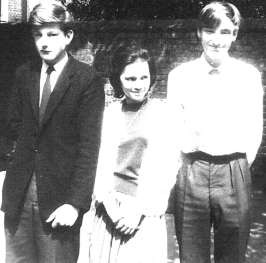
Photo 9. George (Juerg) Haller, Joanne
Gandasoebrata, John Walton
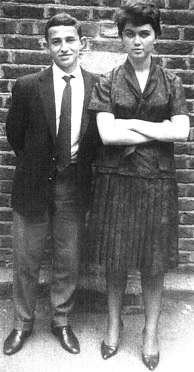
Photo 10. Ben Trisk*, Joanna McEvoy
(*A south African, who excelled at
Tennis - info. thanks to Giles Thomas, who attended 1962-64.)
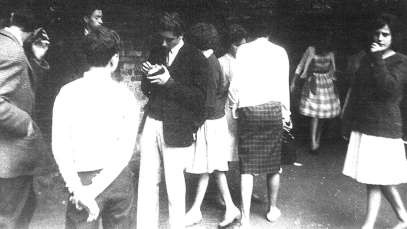
Photo 11. ? - ?
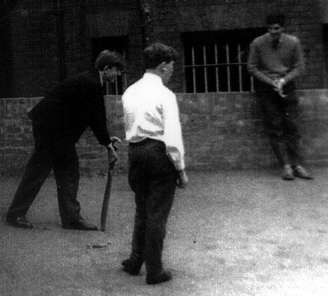
Photo 12. ? - ?
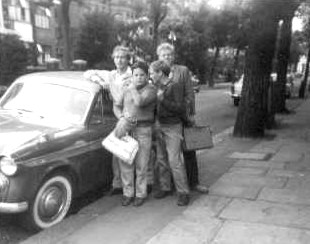
Photo 13. 1960 - on return from Southend
outing: Michael Schmidt, Gerald Davies , John Walton, Peter ?
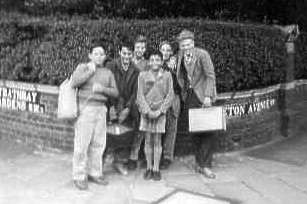
Photo 14. Same day as 13. above: Gerald
Davies , Leslie Taussig(?), George Haller (behind), Robert ?, John Walton (behjind),
Peter ?
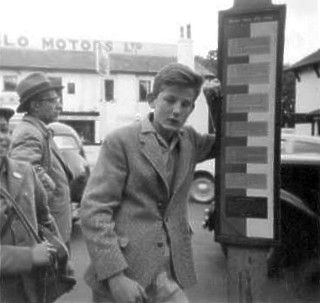
Photo 15. Same day as photo 13: George
Haller at Swiss Cottage bus stop on Finchley Road
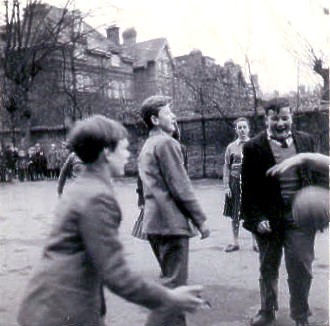
Photo 16. In school playground: Timothy
Grimes(?), George Haller, Sarah Walton (John's sister), Peter Haller (George's
brother)
* * *
Copyright © Telling-Tales 1995 -
2004 . . . . . www.telling-tales.fsnet.co.uk (offline)
 Beesands is a tiny village on the Start Bay
shore between Torcross and Start Point in the southern most part of Devonshire
known as the South Hams. This beautiful fertile region of English countryside
lies between the English Channel and perhaps the most rugged barren "last
wilderness" in the southern half of Britain: Dartmoor.
Beesands is a tiny village on the Start Bay
shore between Torcross and Start Point in the southern most part of Devonshire
known as the South Hams. This beautiful fertile region of English countryside
lies between the English Channel and perhaps the most rugged barren "last
wilderness" in the southern half of Britain: Dartmoor.  Yarkhill in Herefordshire is
in the heart of rural Britain, in the rain shadow of the Welsh Black Mountains
betwixt the city of Hereford and the Malvern Hills. We moved into Yarkhill Court,
a small manor house attached to a working mixed farm, about six miles east of
Hereford and lying between the villages of Tarrington and Stretton Grandison.
Our local Great Western Railway station was Stoke Edith (now no longer existing,
I believe) less than half a mile from Tarrington and about 1.5 miles from the
school.
Yarkhill in Herefordshire is
in the heart of rural Britain, in the rain shadow of the Welsh Black Mountains
betwixt the city of Hereford and the Malvern Hills. We moved into Yarkhill Court,
a small manor house attached to a working mixed farm, about six miles east of
Hereford and lying between the villages of Tarrington and Stretton Grandison.
Our local Great Western Railway station was Stoke Edith (now no longer existing,
I believe) less than half a mile from Tarrington and about 1.5 miles from the
school. 
 After
almost half a century, I can recall only a few names. Immediately behind me
but to my left is Geoffrey Burns. The boy in the row behind Geoffrey is Keith,
behind whom is Peter (who now runs G-Plan Furniture). Beside Peter is Stella
Riser and then another Keith.
After
almost half a century, I can recall only a few names. Immediately behind me
but to my left is Geoffrey Burns. The boy in the row behind Geoffrey is Keith,
behind whom is Peter (who now runs G-Plan Furniture). Beside Peter is Stella
Riser and then another Keith.














